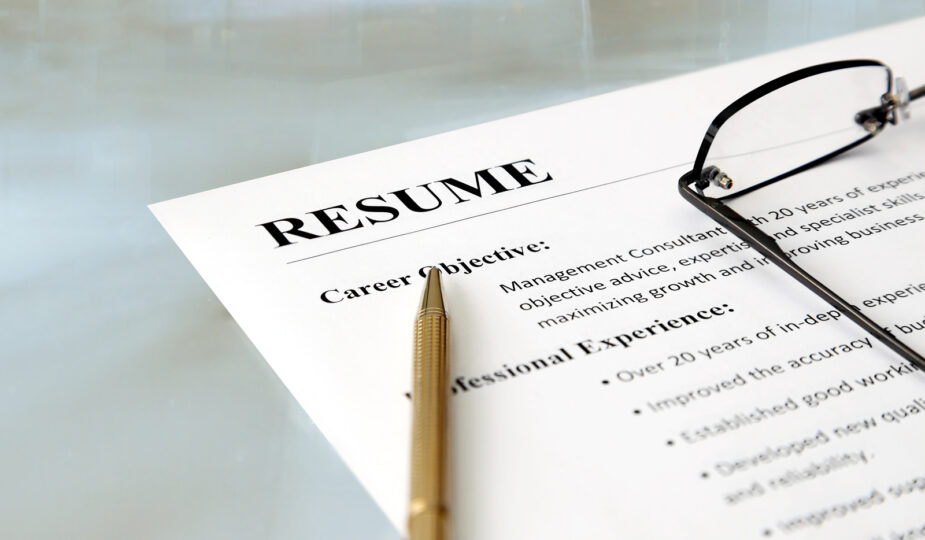
How to Boost Your Resume Writing Skills
What Is In A Name?
Generally, making a professional statement is not always straightforward. In recent years, personal branding has become a catchphrase for personal and professional marketing. Ideally, a resume is one generic and very common document used by job seekers to land jobs by engaging employers. The reality is most job seekers fail to grab employer attention due to understating how powerful resumes are. Typically, a good many job seekers believe a resume is simply listing employment, education and skill entries. Instead, resume writing is a combination of art, learning and practice.
Starting Your Resume Journey
There are many resources and services offering advice on resume writing. These usually include cliché phrases: how to improve resume or how to improve my resume. Typically, almost virtually everyone had a shot at such services – and was not always satisfied. Granted a top resume writing service, creating a great resume needs more. To enhance CV writing skills and get a better resume, you need to develop your art, learn and practice. By “art” is meant fine nuances you need to master in order to get an employer’s attention. That is, you need to read an employer’s mind before you get to put your words on paper. This is explained a bit later. By “learn” is meant constant rehearsal of acquired resume writing skills. This is different from practice. In learning, you analyze, synthesize and put into marketable words what you believe you should include in your resume. That is, you do research, network and connect to understand who you are independently and compared to imagined prospective applicants. By “practice” is meant you put what you have learned into several drafts until you get a polished, deliverable copy.

First Impressions
Time is always scarce. Employers simply skip resumes too boring to have a second look at. The reasons for why a resume could be boring are as diverse as resumes are. In all cases, you want to leave a first and lasting impression. This needs you to be condense in resume length, wording, and main highlights. For a starter, https://customessayorder.com/pay-someone-to-write-my-paper is a great resource for ordering custom essays.
These are also Ten Commandments for writing great resumes:
- Be specific.
- Customize for each resume and each employer
- Do not overpersonlize by including overly personal photos and/or social media links.
- Back up: Do not mention anything you do not have proof of.
- Make your career and academic summary higher up in your resumes to get noticed.
- Showcase your skills. Do not brag.
- Do research about your prospective employer to use her language in your resume.
- Seek advice.
- Network and participate in career fairs and counseling events.
- Condense. Condense.
Modern Look
In addition to content, form, and design is just as important. Your resume might look perfect content-wise. However, lines after lines, uninterrupted, could offer a very good reason for an impatient employer (most are) to move on. If content is what you say, design is how you say what you say. This is where art of advertising resume comes in. To support your words, images, charts, and graphs could play a critical role in making you shine – and measurable. You can use any word-image combination as long as you are balanced. For example, if you wish to highlight one or more career achievements, a simple bar chart could do. You could also include samples of your work portfolio, particularly if you are in a creative industry (e.g. photography). Then again, use graphics economically. Be modern. Do not clutter. Too many graphics are more likely to distract. Generally avoid graphics, colors or patterns not in your prospective employer’s logo, office design, architecture, etc. This might require some extensive research since proper understanding of employer’s language and “ways” is critical for a great resume. The rewards are invaluable and are apt to leave a lasting impression on recruiters and employers.

The following amounts to a mini handbook of resume design:
- Include graphics and keep modern.
- Do research to correctly identify your prospective employer’s logo, office design, architecture, etc.
- Seek advice on design and photo editing.
- Spruce up by including graphics and do not agonize over unnecessary refinements.
- If in doubt, do not include any graphics.
- If you choose not to include graphics, include instead simple patterns to offset a word-full page.
Polish and Showcase Accomplishments
This is where most people stumble. Indeed, resume is shown to be one most confusing practice, particularly if learning resume writing occurs in formal classroom settings should not, however, make you give up. The constant investment you put into resume writing really pays off. This is particularly applicable to how you choose to showcase your skills and accomplishments. The combination of art, learning and practice still holds. By drafting your skills and accomplishments sections over and again, you develop, sometimes unconsciously, a knack for professional editing. That is, you improve on your editing skills as you choose what to include or not in your skills and accomplishments sections. Often, however, you are in a rush for a once-in-a-lifetime opportunity. No need to panic. There are many professionals from essay writing service in 12 hours, offering quick and professional help. If not in a hurry, you could, of course, work at a much slower pace. For instance, you could include live links to refer to your online work portfolio. Or, you might wish to put up your resume or a detailed bio for your employer’s convenience. In all cases, make sure you are always economic and include only most relevant skills.
Recommendations
Typically, job applicants seek advice by consulting career advice or resume writing services. This is fine, at least initially. Yet, a more effective approach is to seek recommendations from well-established experts. This could be by participating in career-relevant events, seeking resume writing services and modeling resume on available best-in-class resumes. Finally, all advice amounts to nothing a crucial principle mentioned above: art, learning and practice of resume writing.
Conclusion
In balance, resume writing is an extended process which needs art, learning and practice to master. Generally, resumes need to be specific, customized, backed up, attention-grabbing, researched, informed by advice, and condensed in length and content. Equally important, design is critical to grab employer’s attention. Yet, design should be modern and minimal, not distracting. Polishing and showcasing skills should account for most relevant skills
– not an extensive list of everything. Recommendations should be sought from established sources including career-relevant events, resume writing services and available best-in-class resumes. Finally, only constant investment in resume writing informed by art-learning-practice principle could, eventually, lead to great resumes.









